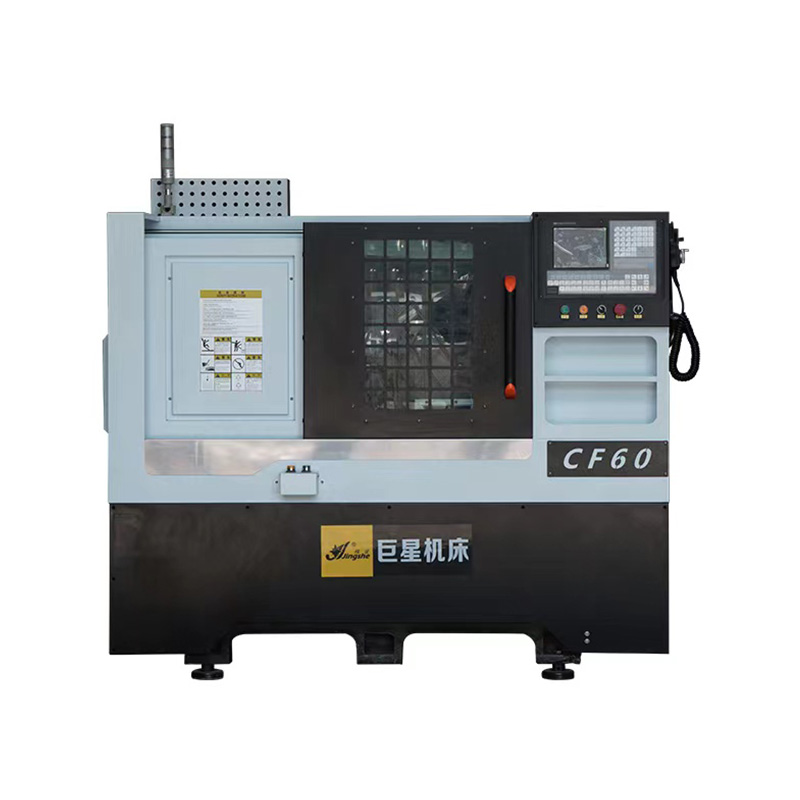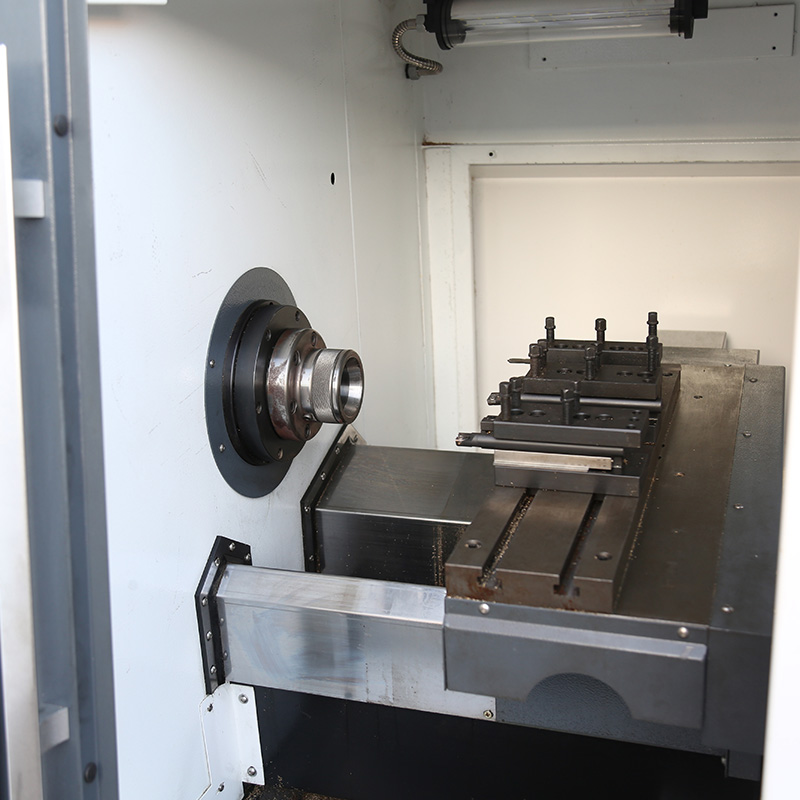CF40 Automatic CNC Polygon Turning Machine Lathe
Cat:Small Polygon Lathe
The CF40 Automatic CNC Polygon Turning Machine Lathe is specifically designed for small to medium-sized, high-precision parts milling, enabling the ma...
See DetailsLinear guide CNC machines are widely used in manufacturing and precision machining due to their ability to provide smooth and accurate linear motion. The linear guide system is crucial to the machine's performance, offering high rigidity, low friction, and precise positioning. However, like any mechanical system, components of linear guide CNC machines are subject to wear and damage over time. Understanding which parts are vulnerable and why damage occurs can help operators and maintenance teams take preventive actions to extend machine life and maintain performance.

Overview of Linear Guide CNC Machines
Linear guide CNC machines use linear guideways or rails combined with rolling elements like ball bearings or rollers to achieve precise linear motion. Compared to traditional sliding ways, linear guides provide reduced friction and better accuracy, making them essential in modern CNC machining centers, milling machines, and routers.
The main structural parts of a linear guide CNC machine typically include:
Linear guide rails
Guide blocks (carriages)
Ball screws or lead screws
Motors and drives
Machine bed and frame
Control system
Among these, the linear guide rails and guide blocks are critical and frequently prone to damage due to their constant mechanical interaction and exposure to environmental factors.
Commonly Damaged Parts and Their Causes
1. Linear Guide Rails
The linear guide rails are precision-ground steel tracks that provide a smooth path for the guide blocks. Damage to rails can severely affect machine accuracy and smoothness.
Common Damage:
Surface scratches and dents
Wear and deformation
Corrosion and rust
Causes:
Contamination by dust, metal chips, or coolant, bring about abrasive wear.
Insufficient or improper lubrication causing metal-to-metal contact.
Misalignment or excessive load causing localized stress and deformation.
Exposure to moisture and corrosive environments without adequate protection.
2. Guide Blocks (Carriages)
Guide blocks house the rolling elements (balls or rollers) that circulate along the rails, enabling smooth linear movement.
Common Damage:
Rolling element wear or fracture
Seal failure bring about contamination ingress
Structural cracks or deformation
Causes:
Contaminants entering through damaged seals or improper maintenance.
Overloading beyond rated capacity causing premature fatigue.
Inadequate lubrication reducing rolling element lifespan.
Impact or shock loads causing physical damage.
3. Ball Screws or Lead Screws
Ball screws convert rotary motion into linear motion and are vital for precise positioning.
Common Damage:
Thread wear or pitting
Nut wear and backlash increase
Corrosion on screw surfaces
Causes:
Insufficient lubrication causing metal wear.
Contaminants causing abrasive damage.
Misalignment causing uneven load distribution.
Excessive axial or radial loads beyond design limits.
4. Motors and Drives
While not directly part of the linear guide system, motors and drives can be affected by improper machine operation or environmental factors.
Common Damage:
Overheating and electrical failures
Bearing wear
Causes:
Overloading or frequent start-stop cycles.
Poor cooling or ventilation.
Electrical surges or voltage instability.
5. Machine Bed and Frame
Though robustly built, machine beds and frames can suffer from structural issues affecting linear guide alignment.
Common Damage:
Cracks or deformation
Loosening of fastening elements
Causes:
Excessive vibration or shock.
Foundation settling or uneven mounting.
Thermal expansion without proper compensation.
Factors Contributing to Damage
Several factors influence the extent and frequency of damage to linear guide CNC machine components:
Environmental Conditions: Dust, moisture, and corrosive agents accelerate wear and rust.
Maintenance Practices: Lack of regular cleaning, lubrication, and inspection bring about premature damage.
Operating Conditions: Operating the machine under loads exceeding specifications or abrupt starts/stops increases mechanical stress.
Installation and Alignment: Poor initial installation or misalignment causes uneven wear and damage.
Maintenance Tips to Reduce Damage
Effective maintenance can significantly reduce damage and extend the service life of linear guide CNC machine components:
Regular Cleaning: Frequently clean rails and guide blocks to remove dust, chips, and coolant residues.
Proper Lubrication: Use manufacturer-recommended lubricants and maintain lubrication schedules to minimize friction and wear.
Seal Inspection: Check seals regularly to prevent ingress of contaminants and replace them if damaged.
Alignment Checks: Periodically verify alignment of rails, ball screws, and components to prevent uneven wear.
Load Management: Avoid operating beyond rated loads and reduce shock or impact forces during machine operation.
Environmental Control: Use protective covers or enclosures to shield sensitive parts from harsh environments.
Scheduled Inspections: Implement routine inspections to detect early signs of wear or damage for timely intervention.

